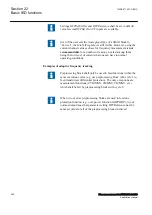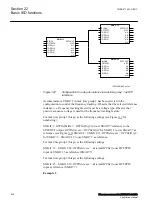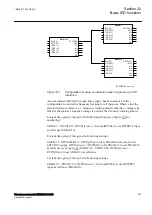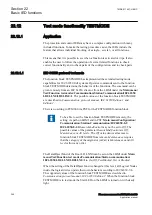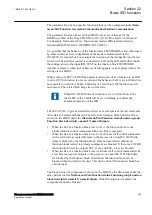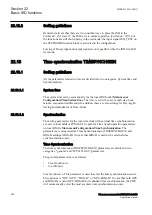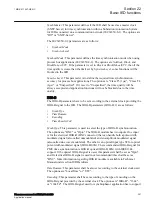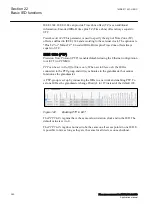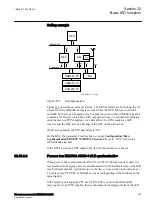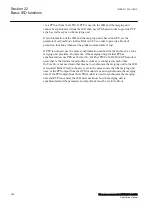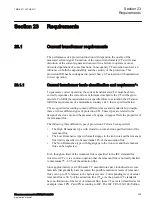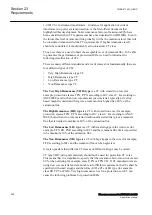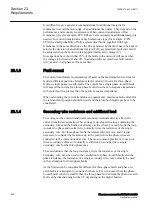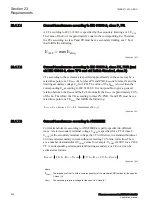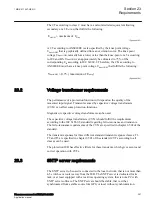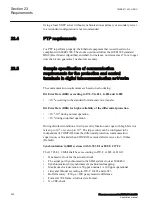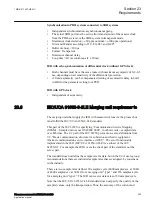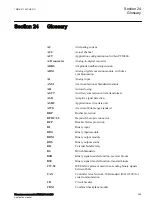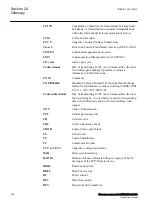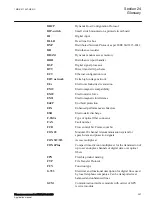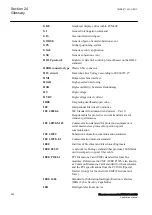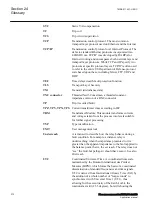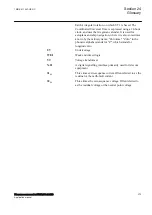
It is difficult to give general recommendations for additional margins for
remanence to avoid the minor risk of an additional time delay. They depend on the
performance and economy requirements. When current transformers of low
remanence type (for example, TPY, PR) are used, normally no additional margin is
needed. For current transformers of high remanence type (for example, P, PX,
TPX) the small probability of fully asymmetrical faults, together with high
remanence in the same direction as the flux generated by the fault, has to be kept in
mind at the decision of an additional margin. Fully asymmetrical fault current will
be achieved when the fault occurs at approximately zero voltage (0°).
Investigations have shown that 95% of the faults in the network will occur when
the voltage is between 40° and 90°. In addition fully asymmetrical fault current
will not exist in all phases at the same time.
23.1.3
Fault current
M11613-3 v1
M11613-4 v3
The current transformer requirements are based on the maximum fault current for
faults in different positions. Maximum fault current will occur for three-phase
faults or single phase-to-earth faults. The current for a single phase-to-earth fault
will exceed the current for a three-phase fault when the zero sequence impedance
in the total fault loop is less than the positive sequence impedance.
When calculating the current transformer requirements, maximum fault current for
the relevant fault position should be used and therefore both fault types have to be
considered.
23.1.4
Secondary wire resistance and additional load
M11614-3 v1
M11614-4 v4
The voltage at the current transformer secondary terminals directly affects the
current transformer saturation. This voltage is developed in a loop containing the
secondary wires and the burden of all relays in the circuit. For earth faults the loop
includes the phase and neutral wire, normally twice the resistance of the single
secondary wire. For three-phase faults the neutral current is zero and it is just
necessary to consider the resistance up to the point where the phase wires are
connected to the common neutral wire. The most common practice is to use four
wires secondary cables so it normally is sufficient to consider just a single
secondary wire for the three-phase case.
The conclusion is that the loop resistance, twice the resistance of the single
secondary wire, must be used in the calculation for phase-to-earth faults and the
phase resistance, the resistance of a single secondary wire, may normally be used
in the calculation for three-phase faults.
As the burden can be considerable different for three-phase faults and phase-to-
earth faults it is important to consider both cases. Even in a case where the phase-
to-earth fault current is smaller than the three-phase fault current the phase-to-earth
fault can be dimensioning for the CT depending on the higher burden.
Section 23
1MRK 511 407-UEN C
Requirements
358
Phasor measurement unit RES670 2.2 IEC
Application manual
Summary of Contents for Relion RES670
Page 1: ...RELION 670 SERIES Phasor measurement unit RES670 Version 2 2 IEC Application manual...
Page 2: ......
Page 46: ...40...
Page 52: ...46...
Page 92: ...86...
Page 112: ...106...
Page 178: ...172...
Page 216: ...210...
Page 232: ...226...
Page 286: ...280...
Page 328: ...322...
Page 340: ...334...
Page 380: ...374...
Page 381: ...375...

